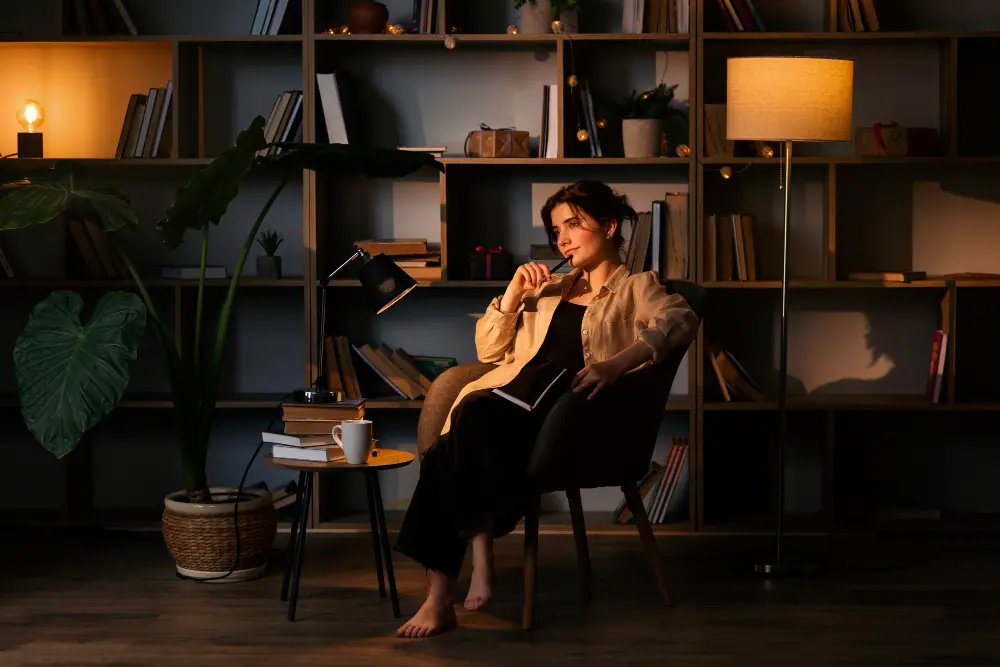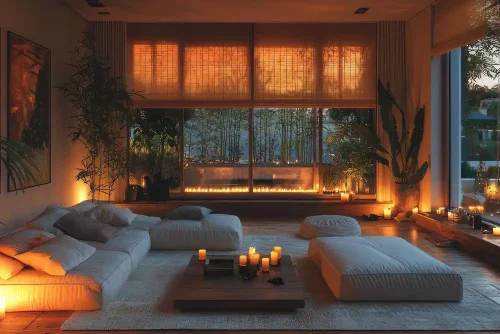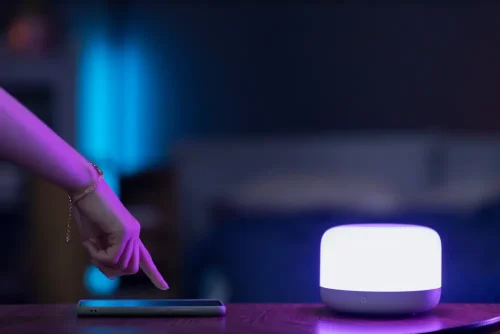
How Lighting Design Can Transform Your Mood at Home
Lighting shapes how you experience your home every day. The way your rooms are lit affects your emotions, energy, and comfort. From bright task lights that keep you focused to soft glows that calm your mind, lighting design can transform your mood more than you may think. Pairing smart lighting choices with simple lifestyle tips for settling in helps you create a space that truly supports peace, motivation, and creativity, making every room feel more balanced and alive.
How Lighting Design Can Transform Your Mood and Daily Energy
Light has a direct impact on how your brain processes emotions. Warm tones help you unwind, while cool lights keep you alert. Smart lighting systems now let you adjust both brightness and color temperature, helping your mind stay in sync with natural patterns of daylight and nightfall.
Your living room, for example, benefits from layers of light ceiling fixtures for general brightness, wall sconces for accent, and lamps for cozy evenings. Balanced lighting design helps reduce eye strain and promotes mental clarity. This balance is key to emotional stability and comfort at home.
Using Lighting to Define Home Atmosphere
Each room should serve a clear purpose, and lighting should match it. The kitchen benefits from brighter lighting for safety and focus. Bedrooms call for dimmable lights that calm the body and mind. Bathrooms need a balance between clarity for tasks and warmth for comfort.
Accent lighting, such as LED strips under cabinets or soft floor lighting, adds personality and visual comfort. These simple upgrades create depth and make your home look inviting. Layering different light sources is the foundation of effective lighting design. Lighting design can transform your mood and help your new house feel like home by matching each light type with emotional intent and daily activity.
The Science Behind Mood and Light
Human biology responds strongly to lighting. Morning sunlight triggers serotonin, boosting alertness and energy. As daylight fades, your body needs dimmer light to release melatonin and prepare for rest. Artificial light that mimics this natural rhythm supports better mood balance and sleep quality.
A poorly lit room can make you feel tense or fatigued. Harsh fluorescent light often causes headaches and irritability, while warm LED lights can make a home feel welcoming and relaxed. Choosing the right bulb color temperature, measured in Kelvin, changes how your environment affects your state of mind.
Setting the Tone: Warm vs. Cool Light

Warm white light (around 2700K–3000K) gives a cozy feel that’s perfect for relaxation areas. Cool white light (4000K–5000K) suits workspaces where focus is important. Adjusting between the two helps control mood.
For example, switching from cool light during the day to warmer tones at sunset can help you unwind naturally. This approach creates emotional flow throughout your home, boosting productivity when needed and peace when it’s time to rest. Here too, lighting design can transform your mood by guiding your body through natural rhythm and emotion.
Practical Lighting Tips for Every Room
Living Room: Combine ceiling lighting with table lamps. Use dimmers to control brightness during different activities.
Bedroom: Choose soft bedside lights and blackout curtains to promote rest. Avoid harsh overhead bulbs.
Kitchen: Use bright under-cabinet lights to improve visibility and safety.
Bathroom: Balance brightness with diffusion. Use side lighting near mirrors for even illumination.
Home Office: Select daylight-simulating bulbs to stay alert. Add an accent light to reduce screen glare.
The goal is harmony. Each layer should serve a purpose and match your emotional needs throughout the day. Smart placement proves how lighting design can transform your mood by tailoring brightness and tone to your daily routines.
Light Placement and Emotional Impact

Positioning lights strategically helps control how a room feels. Overhead lighting alone can feel cold and impersonal. Instead, use wall or floor lamps to soften shadows and make rooms more engaging.
Uplighting can make a small space feel open, while downlighting can create focus and comfort. Light direction also changes how textures and colors appear, affecting mood subtly but powerfully.
Connection, Comfort, and Feeling at Home
Good lighting fosters connection. A softly lit dining area encourages conversation. A bright workspace supports focus. Adaptive lighting can change tone automatically to fit each moment, morning brightness for motivation, evening dimness for calm.
Thoughtful illumination can make it feel like home by creating warmth, comfort, and emotional balance. Lighting design connects people to their spaces and helps every corner feel inviting, safe, and personal. It shapes how you experience your home each day and influences how welcome and grounded you feel within it.
Lighting and Personal Expression
Lighting reflects personality. Some prefer minimal designs with sleek LEDs, while others choose warm filament bulbs for charm and comfort. Colored smart bulbs can shift tone instantly from bright white for energy to amber for peace.
Small touches, like fairy lights or glowing shelves, express warmth and individuality. The more your lighting reflects you, the more grounded and content you’ll feel at home.
How Lighting Enhances Design and Comfort
Lighting connects décor and function. It highlights furniture, textures, and color schemes while keeping the environment inviting. A soft spotlight on artwork or plants adds beauty and emotional depth.
With the right balance, lighting also reduces clutter perception and gives structure to your home layout. It’s not only about visibility, it’s about harmony between brightness, design, and emotional flow.
Sustainable Choices and Long-Term Benefits
Energy-efficient bulbs, such as LEDs, use less power and last longer than traditional bulbs. Smart systems with motion sensors prevent waste and let you manage lighting remotely.
Sustainable design supports both mental health and environmental responsibility. A home that aligns with your values promotes calm, satisfaction, and long-term comfort.
The Future of Home Lighting Design

Modern homes now use smart systems that adapt automatically. Sensors track daylight, adjusting brightness to maintain consistency. Voice control lets you change lighting without switches. These tools combine convenience with emotional comfort.
With technology supporting design, homeowners have new ways to create calm, productive, and inspiring environments.
How Lighting Design Can Transform Your Mood in Daily Life
As you adjust your lighting over time, you’ll notice emotional changes. Soft light in the morning reduces stress and improves focus, creating a morning routine that grounds you and prepares you for the day ahead. Dimmed evening lighting supports rest and better sleep.
Through small, thoughtful choices, you gain emotional control. Whether reading, working, or relaxing, light acts as a silent partner, guiding your mood and helping each space fulfill its purpose.
Read More: Tips for Creating a Cozy and Inviting Living Room
Lighting Design Can Transform Your Mood Every Day
Your lighting choices directly influence how you feel, rest, and interact at home. From warm glows that help you relax to cool lights that inspire productivity, lighting design can transform your mood and your overall well-being. When your lights work in harmony with your emotions, your home becomes more than a place to live; it becomes a place that supports who you are, every single day.
FAQs
Q: How does lighting design affect your mood at home?
A: Lighting affects hormones that control energy and relaxation. Warm tones help you unwind, while cool lights keep you focused. Smart lighting systems can adjust brightness and color to support emotional balance throughout the day.
Q: What are simple ways to make a new house feel like home with lighting?
A: Use layered lighting, ceiling fixtures, lamps, and accent lights to create warmth and depth. Soft, adjustable lighting helps make your new house feel like home by adding comfort and personal character.
Q: Can lighting really impact your daily routine and focus?
A: Yes. Soft morning light reduces stress and helps form a morning routine that grounds you. Brighter light during the day boosts focus, while dim lighting at night encourages rest and better sleep.
Q: What types of light are best for different rooms?
A: Use bright white light in kitchens and offices for clarity, and warm tones in bedrooms and living rooms for calm. This balance supports comfort and shows how lighting design can transform your mood in every space.
Q: Why is lighting important for emotional comfort and connection?
A: Good lighting shapes how you feel in your space. Thoughtful illumination can make it feel like home by fostering warmth, connection, and relaxation while creating a welcoming environment for daily life.

